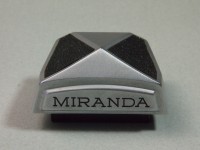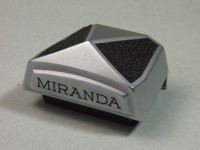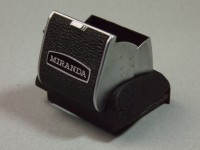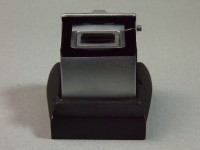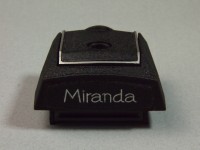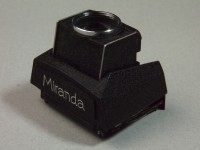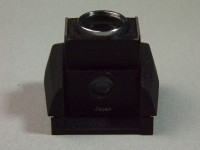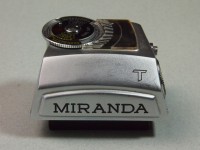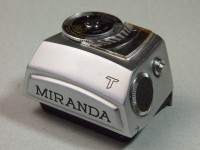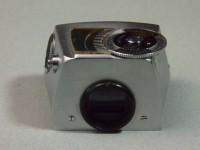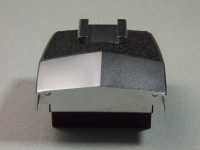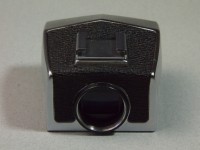One of the most distinctive features of the Miranda SLR cameras was the interchangeable viewfinder system. Some other camera companies have also used a similar system on some of their models (notably Nikon F, Canon F-1 and some Topcon models, and of course Ihagee Exakta), but Miranda was the first Japanese make, and the only make to use this feature across their whole SLR range, from the first Miranda/Orion T in 1955 to the last 1976 Sensorex EE-2. Also, Miranda had another first: it was the first Japanese production SLR to have a pentaprism viewfinder at all.
I’ll introduce here the different Miranda viewfinder versions I have. Let’s start with the standard pentaprism viewfinder which was factory fitted to almost every model.
The optional VF1 waist-level finder (this is the one my father used on his Miranda Fv).
The optional critical focuser VF3. 5x magnification when opened, 15x when folded down.
The pentaprism with a built-in Through-The-Lens (TTL, hence the “T”) CdS exposure meter. Originally used in the GT and FvT models, but can be retrofitted to any model, except the Automex/Sensorex range.
The standard pentaprism viewfinder of a Sensorex C. The Automex/Sensorex range had their own range of viewfinders; the mounting is superficially similar, but the dimensions differ.
Also, there exists some Miranda viewfinder models I don’t currently have: there are for example an another critical focuser model VF4, and an earlier version of the metering prism used in the FM model, which isn’t a TTL but has a metering eye on the upper front corner of the prism.

